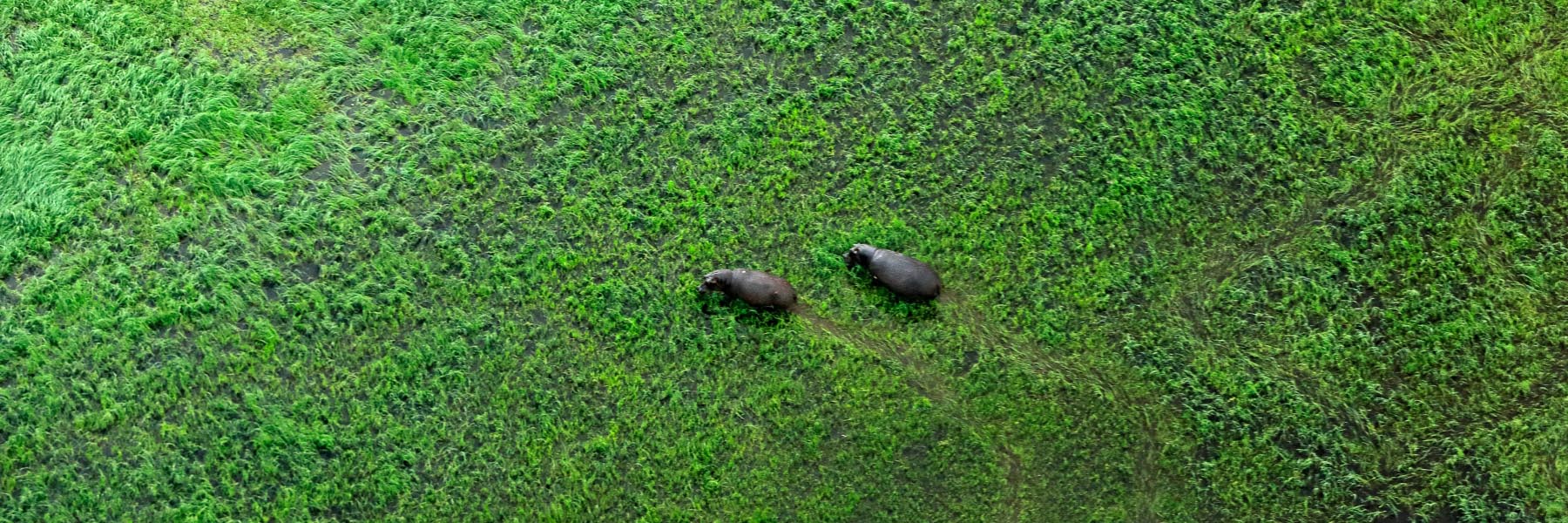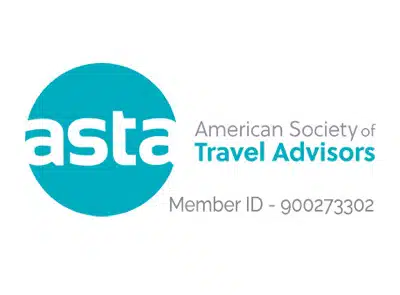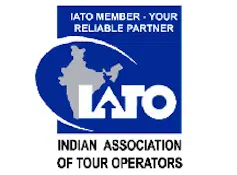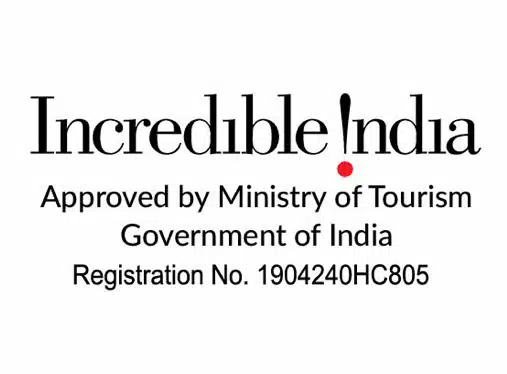The Okavango in north-western Botswana is the world’s largest inland delta. Being one of the very few major inland deltas that don’t flow into the sea, it comprises permanent marshlands and seasonally flooded plains. Every year, the Okavango river discharges upwards of 11 cubic kilometres of water into the delta. The delta receives this water during the dry season. As a result of this unusual occurrence, the flora and fauna here have synchronized their biological cycles according to the seasonal flooding and rains. Being a largely untransformed system, this place in a near-pristine state. Okavango Delta became the 1000th site to be inscribed onto UNESCO’s World Heritage Site list in 2014. The Delta was also named as one of the Seven Natural Wonders of Africa.

Okavango from space

Swamps of Okavango
Permanent swamps in this area are spread over 60,000 hectares. When the floodwaters recede, water remains in riverbeds, canals, and larger lagoons. These lagoons attract a large number of animals. Some of the famous lagoons in the area are Dombo Hippo Pool, Gcodikwe Lagoon, Guma Lagoon, Moanachira Lagoon, and Shinde Lagoon. The presence of this vibrant wetland in an otherwise arid landscape of the Kalahari Desert is extraordinary and transforms this place into a landscape of exceptional beauty.
Plants
The most common plants that make up a large part of Okavango’s vegetation are papyrus and reed rafts. They float above riverbeds during flood season with their roots dangling in the water. Crocodiles use this gap as shelter and hiding spots. The banks of river Okavango delta are made up of sand, with very little mud, making it prone to erosion. The plants in this area provide a much-needed cohesion to bind the sand. In this way, plants play an important role in maintaining the ecological balance of the area.

Wildlife of Okavango
Wildlife of Okavango
The crystal-clear waters and nutrient-rich land sustain an ecosystem for a remarkable habitat and diversity of species. The Okavango Delta is the home of some of the most endangered animal species, like the white and black rhinoceros, lion, and cheetah. Other species quite commonly found in this area are African bush elephant, serval, caracal, sitatunga, blue wildebeest, common eland, springbok, steenbok, gemsbok, greater kudu, impala, Sharpe’s grysbok, Thomson’s gazelle, impala, South African giraffe, African buffalo, zebra, Nile crocodile, and chacma baboon.

African wild dog
Unusual antelope species also find their home here, like sable, roan, and tsessebe. The African wild dog is also easily spotted here. The most common swamp-adapted animal is the Red Lechwe, which is well adapted for life both in and out of water. Okavango is home to more than 88,000 individuals as per recent estimates. A little larger than the impala, this mammal has elongated hooves and water-repellent substances on its legs to increase mobility in water.
More than 400 bird species find their home in Okavango. Some of the prominent ones are South African shelduck, Pel’s fishing owl, helmeted guineafowl, Egyptian goose, African fish eagle, marabou stork, African jacana, African spoonbill, crested crane, hornbill, African darter, and common ostrich.
Fish life is also abundant here, with more than 71 species finding their home in the Okavango Delta. Their sizes range from 3.2 cm long sickle barb to 1.4 metres long African sharptooth catfish. Other species include tigerfish, tilapia, and various species of catfish.
Accommodation at Okavango
Tourism to the inner Delta is restricted to only certain areas, thereby helping preserve the pristine condition of this delta. About 40% of the facility is protected in the Moremi Game Reserve. 18 wildlife management areas are scattered throughout the delta and legal protection is afforded to prohibit hunting.
There are three broad categories of the accommodation offered in Okavango. Water camps situated on the delta itself are the best option for visitors keen on exploring the unique waterways and the birds and aquatic creatures. Land-based camps are located on the oasis, which attracts all kinds of animals that come here in search of food and shelter. The third category is a mixed-use camp, for visitors wanting the best of both worlds.

Luxury stay in Okavango
Vumbura Plains Camp, split into North and South contains a total of 14 rooms and offers a full suite of Delta Safaris. Both day and night game drives are available. You can also enjoy boat and mokoro safaris on the nearby waters.
Camp Okavango is situated on the relatively remote Nxaragha Island and offers an amazing water wilderness experience. You can go on walking safaris, or mokoro and motorboat safaris.

Camp in Okavango
Situated in the delta’s premier game-viewing area, Little Mombo is known for its huge concentration of wildlife, both general game as well as predators.
Activities at Okavango
Activities in the Okavango delta include walking safaris, horseback riding safaris, boat and mokoro safaris, boating in the delta, fishing in the delta, scenic helicopter flight over the delta, and a comprehensive safari game drive.

Aerial view of Okavango from helicopter
If you loved reading this story, then subscribe to our blog here (it will ask to verify your email) to get inspiring travel stories and trivia delivered to your email. Stories about wildlife trivia, cultural experiences, curated luxury hotel lists, underrated places to travel, polar journeys and much more.











